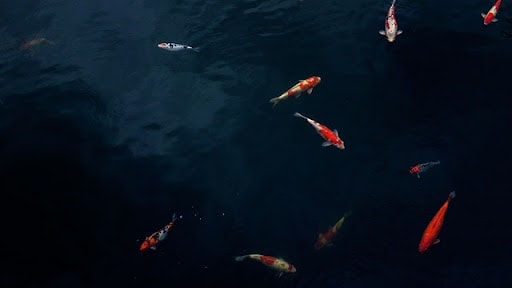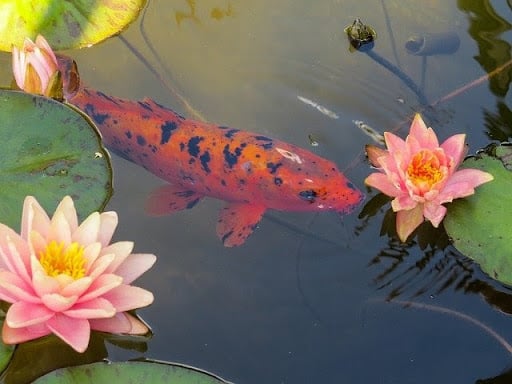Winter is coming, so it’s time to start getting your fish pond ready for the cold months ahead! The following guide will give you all the necessary steps you need to take now in order to ensure that, come wintertime, those Koi and goldfish can survive and thrive through harsh conditions.
1. Get a pond de-icer
Contents
The first and most important step to take is to get a pond de-icer. Without one, the water in your fish pond will freeze over and potentially kill any animals inside! Make sure to choose a de-icer that’s appropriate for the size of your pond. There are 2 main types of pond de-icers: floating and submersible. Floating de-icers sit on top of the water like little ice cubes, but they work best when there isn’t much wind blowing around (otherwise, the wind will blow away their heat). Submersible de-icers can be placed directly in the water and don’t need external power sources in order to function (but they’re more expensive than floaters).
2. Get a pond cover
Getting a pond cover will keep the water in your fish pond warm all winter long. Be sure to choose one that’s UV protected, as this will protect it from sunlight damage throughout the year. There are 3 types of covers available at plastic, bubble, and solid. Plastic covers are the least expensive, but also the least effective against colder weather. On the other hand, solid covers are typically more expensive but also offer more protection. Bubble covers strike a nice balance between cost and durability.
3. Keep an eye on your fish
Because goldfish and Koi are coldwater fish, they’re much more likely to survive in colder water (and when de-iced) than other types of tropical fish. That said, you should still keep an eye on them over the winter. If the pond cover is not sufficient to keep your pond warm, ice will build up around their outdoor habitat. To prevent this from happening, check-in periodically throughout the winter to ensure there’s no excess ice buildup. Also, be sure that if any parts of your pond do freeze over that you break up the ice before it gets too thick!
4. Monitor the weather forecast
As often as possible, monitor the weather forecast to make sure you’re prepared for whatever comes your way. Before winter arrives, check the forecast and note any days when it’s going to be particularly cold or windy out. For example, if your pond is exposed to strong winds (like on a hilltop), be sure that you take extra precautions by using heavier covers and de-icers. If you’re given several days of extremely low-temperature forecasts ahead, don’t forget to bring in all your livestock before they become exposed!
5. Get some winterizing plants for your pond
Plants are a wonderful way to make your fish pond look beautiful all year long, but during the winter they do something even more important: they trap heat from the sun and keep it in an area that’s exposed. This means that as the sun is going down, plants will release stored heat into your water—and help prevent any ice from forming. In addition to these helpful features, there’s also another reason why you should get some winterizing plants for your pond: oxygen! While we tend to think of ponds as great ways for fish and other aquatic animals to breathe underwater, sinking through little holes and such, it turns out that having oxygenated plants near the surface of said water helps maintain healthy levels of oxygen.
6. Do routine maintenance
As winter approaches, there are a few things you can do around your pond to ensure that it’s in healthy shape for spring. A big part of the maintenance process is cleaning out your pond so that organic materials don’t build up and feed harmful bacteria. If you need help, be sure to check out our guide on water garden care! Hopefully, with these steps, everyone will have an easier time getting through their upcoming winters without any unexpected complications!
Why should you take care of your fish pond whether it’s summer or winter?
Though many people typically think about maintaining their ponds in the summer (when there’s plenty of sunlight and heat), it turns out that winterizing your pond is just as important—if not more so. While you might be able to get away with neglecting your pond during the warmer months, remember that winter months are much colder than what tropical fish (like Koi and goldfish) are used to. As such, neglecting them over the winter could end up resulting in an ice-covered water source, which will have disastrous effects for these coldwater fish. In order to prevent this from happening, be sure to follow these steps and enjoy a healthy pond all year long.
Winter can be hard on fish ponds. All the cold months leave the water in a very deteriorated condition, which causes all sorts of problems for not only your fish but also for your pond. If you keep up with your maintenance and follow these steps prepared, then you can easily get through it. Good luck!

